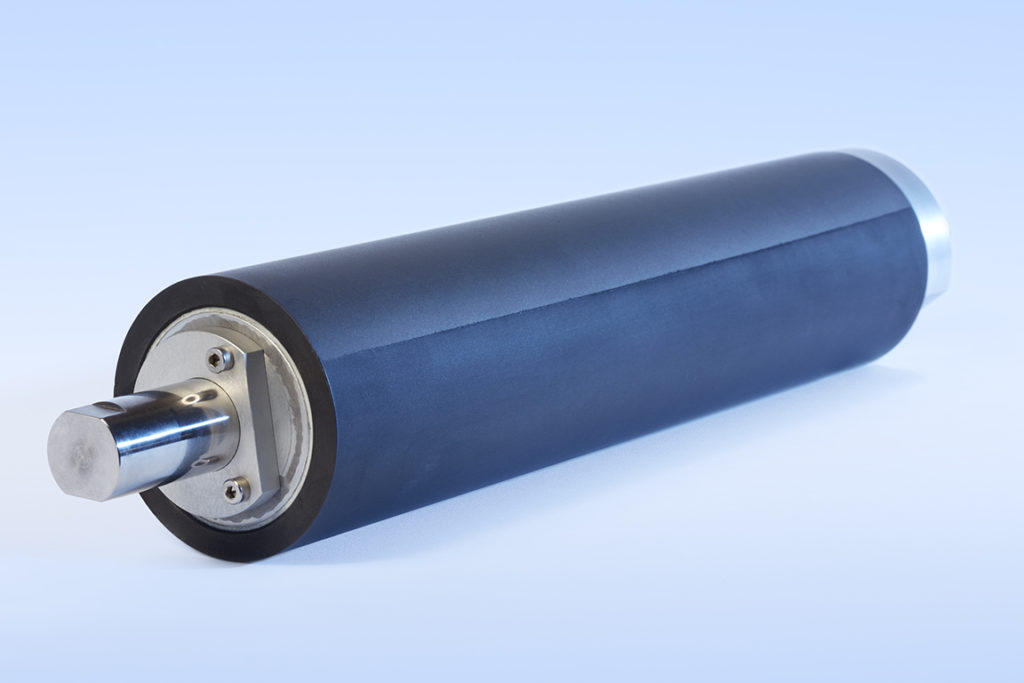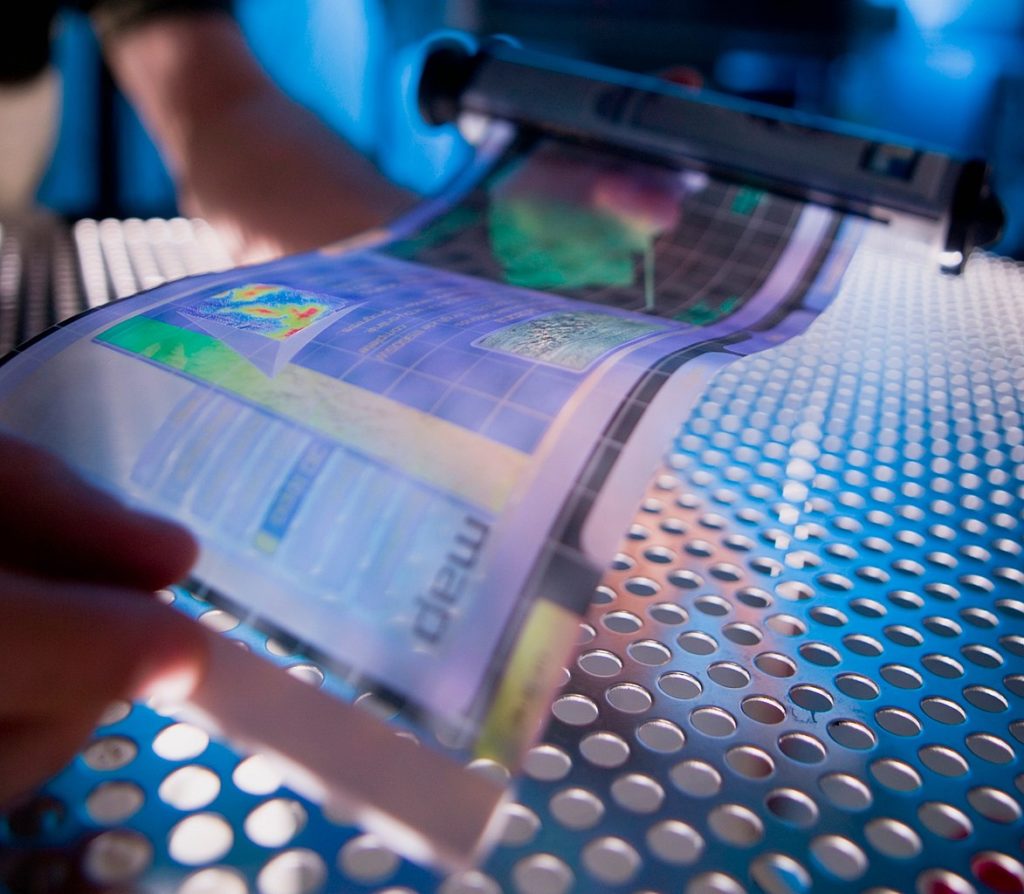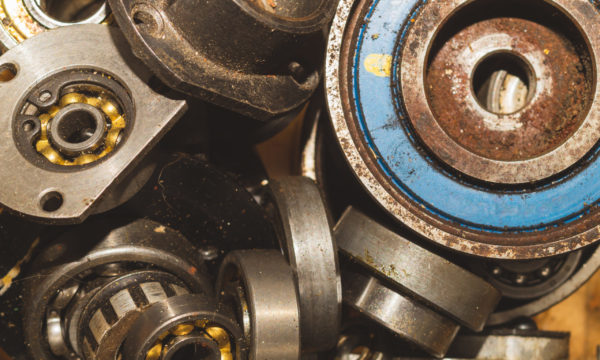Three Non-Contact Roll-to-Roll Solutions that are Changing the Manufacturing Industry
Flexible Web Handling has a New Challenge
 Flexible Hybrid Electronics (FHE) have the ability to revolutionize the manufacturing industry.
Flexible Hybrid Electronics (FHE) have the ability to revolutionize the manufacturing industry.
By combining electronics with high-precision printing, FHE provides flexible substrates with the ability to bend, twist, or stretch to curved and irregular shapes. The result is “smart” applications with the ability to enhance decision-making and efficiency across the spectrum. The medical industry is currently the largest FHE consumer. However, the demand is growing and an estimated $30 billion market is rising up to provide FHEs to individual consumers and industries such as:
- Automotive
- Manufacturing
- Military
The innovative applications of FHE seem limitless. However, when it comes to achieving mass production through a roll-to-roll (R2R) based manufacturing system, there are still big challenges. Let’s look more closely at two major obstacles facing roll-to-roll manufacturing of FHE.
Two Major Obstacles for FHE Roll-to-Roll Production
 Manufacturing FHE brings with it unique and stringent requirements to print and handle delicate silicone-based electronics. These requirements present the biggest hurdles for progressing a product from a research and development (R&D) idea to full-scale production and distribution.
Manufacturing FHE brings with it unique and stringent requirements to print and handle delicate silicone-based electronics. These requirements present the biggest hurdles for progressing a product from a research and development (R&D) idea to full-scale production and distribution.
1. Contamination/Scratches
Many R2R manufacturing systems use rollers, tensioners, and spreader bars, which can cause contamination and scratches. Contamination can cause loss of product and maintenance downtime, resulting in lower profits. This could potentially lead to higher prices, lowering consumer demand, and impacting sales. Additionally, FHE often employs concurrent coatings of the substrate, adding another level of complexity to managing contamination.
2. Precision
To understand the exacting process of FHE manufacturing, let’s take an example of a small wearable patch for the human body. The military has actually been attempting to develop wearable biosensors for decades. Embedded in this small patch are—at a minimum—the following:
- Sensors
- Communication interface and antennas
- Solar cell
- Battery
- Memory
- Display
- Processor
 Incorporating this many (and possibly more) components into just one patch requires incredibly precise production. The demand for manufacturing a mass quantity at high speeds makes these challenges all the more difficult. Not meeting these stringent requirements can result in:
Incorporating this many (and possibly more) components into just one patch requires incredibly precise production. The demand for manufacturing a mass quantity at high speeds makes these challenges all the more difficult. Not meeting these stringent requirements can result in:
- Poor quality
- Unreliable data
- Damage—ranging from one patch/device to a large swath of the web
To overcome these obstacles, manufacturing requires noncontact, high-precision components to support production. Thankfully, there is proven technology available to overcome these obstacles and put FHE in the hands of the everyday consumer.
Overcoming the Obstacles
Air bearing technology has been in use for more than 50 years, providing frictionless solutions to precision industries. This noncontact solution uses a pressurized air cushion to replace traditional rollers-and-lubricant bearings. No contact means no friction, which allows for greater precision. Another important side benefit of air bearings is the reduced maintenance compared with roller components. No downtime is required to periodically apply lubrication or replace parts due to friction wear.
There are two different types of traditional air bearings on the market, with the main differentiator being how the air is distributed:
- Orifice or Grooved—air forced through a configuration of holes or slots.
- Porous Media™-—air distributed through millions of sub-micron holes.
One immediate difference between these two designs is in the evenness of the air distribution. Orifice technology is known for exhibiting pressure gradients, which can result in contact with the substrate causing damage or contamination. With the use of porous media, the air is evenly distributed, ensuring there is never any contact. Additionally, the even air distribution allows a stiffer, thinner, and more controllable air cushion, providing greater precision and performance.
A New Way for FHE Mass Production
New Way® Air Bearings has a 25-year history of success using its Porous Media Technology™ to manufacture air bearings in high-precision industries, including:
To learn more about how New Way products overcome industry challenges. Download our eBook on air bearings in the medical industry.
Our Porous Media Technology is the foundation of all of our products, allowing us to deliver durable Frictionless Motion®️. Our porous carbon surface features millions of sub-micron holes, enabling a nanometer-thin, yet amazingly strong stiff air cushion. This offers a noncontact solution while delivering high-precision accuracy and repeatability.
New Way is no stranger to the contamination and precision concerns of the FHE industry. More than a decade ago, New Way revolutionized the Flat Panel Display (FPD) market through its Air Bars. At that time, the FPD market was struggling with damage from contact, resulting in loss of production and reduced profit.
Implementing New Way Air Bars practically eliminated the contamination issues, increasing production and lowering product cost for the end consumer. Recognizing the need for a similar solution in the expanding FHE market, New Way has created a suite of three noncontact web handling solutions.
Three Solutions for FHE Web Handling
New Way web-handling components are built to ensure noncontact, high-precision results. Implementing these products can remove the common barriers of contamination and precision that hinder FHE flexible web manufacturing.
Air Turns™
New Way Air Turns are a logical step from air bars, applying the same technology in a cylindrical configuration to move a variety of substrates through the R2R process. Similar to an idler roller, the web is wrapped over the air turn as the air is distributed over the entire cylindrical surface. Air turns can be used in place of turn bars and are versatile enough to be used in myriad other applications within web handling.
Thrust Bushings
New Way Thrust Bushings allow for radial motion but constrain one end axially to prevent linear motion. These bushings consist of a porous carbon sleeve and thrust face encased in an aluminum housing. These thrust bushings provide the stiffness required to ensure consistent performance demanded by FHE production.
Spherical Bearings
New Way Spherical Bearings are ideal for web handling applications as an alternative to journal bearings. They support a sphere on a thin layer of air, eliminating vibration that could affect production. Vacuum preloaded bearings are also available, allowing unprecedented fly-height control and a truly controllable system.
Supercharge Your Process Today
Contamination and precision concerns can be overcome to make FHE commercial-scale production a reality. Applying our success in the FPD market, New Way is confident it has the noncontact solutions needed for FHE roll-to-roll manufacturing.
Looking to spread the word on our differentiating Porous Media Technology, New Way took the opportunity to showcase these three web-handling solutions at this year’s Flexible Electronics Conference and Exhibition (2018 FLEX). To make your FHE production a reality, contact us today and see how we can help get you rolling!



